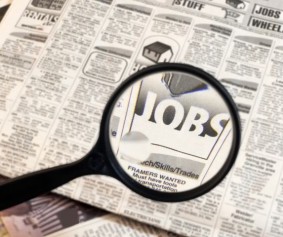Why Friday’s Jobs Report Was Still Pathetic
Thursday, July 11th, 2013 @ 4:53PM
Between the Lines
by Gary D. Halbert
The mainstream media and the Obama administration fawned over last Friday’s unemployment report, but was it really as encouraging as we were led to believe? To be sure, there was some good news in the report, but there was plenty to be concerned about that you may not have heard about. Let’s talk about it.
As for the good news, the government reported that employers added 195,000 new jobs to their payrolls last month. That was well above the pre-report consensus of 165,000. The Labor Department also revised the April and May new jobs numbers up by a total of 70,000, which means that the average for the last three months was close to 200,000. That’s good.
The number of “long-time” unemployed, those out of work for six months or more, fell again in June and is down by one million workers over the past year. The dismally low labor force participation rate ticked up to 63.5% from 63.4% in May – though the rate is still below the 63.8% from a year ago. Average hourly wages climbed a welcome 10 cents and for the first time hit $24. That’s it for the good news.
The headline unemployment rate remained unchanged at 7.6% as compared to the pre-report consensus of 7.5%. The rate failed to come down largely because more Americans were looking for work in June than in May. So we’ll call this one neutral.
Now for the bad news. The total number of payroll jobs in the economy, at 135.9 million, is still 1.6% below 5½ years ago when the recession began. We’re not even back to breakeven. At June’s pace of 195,000 new jobs a month, it will take 11 months to get back to where we were in late 2007 before the recession began.
The worst news in Friday’s report, as reported by Investor’s Business Daily, was the fact that ALL of the net addition to June jobs were part-time positions. Even worse, while 360,000 part-time positions were created, full-time employment shrank by 240,000 in June alone. Year to date, only 130,000 full-time jobs have been created; the rest of the new jobs – 557,000 – have been part-time.
The number of Americans who want to work full-time but could only find part-time work spiked by 322,000 in June to 8.23 million. As you can see in the chart at left, the number of part-time workers who couldn’t find full-time jobs fell in late 2012 and early this year to below 7.7 million.
Since then, however, that number has risen sharply as noted above. To put this in perspective, this year’s low around 7.7 million is significantly above the level of apprx. 4.5 million at this point in the previous recovery.
One big reason for this big shift to part-time employees is ObamaCare. The original law required employers with more than 50 workers to provide health insurance to all full-time employees beginning in 2014 or pay a $2,000 fine per worker. The law also defined a full-time job as 30 hours or more per week. All of this gives businesses that operate on thin margins – and that includes most businesses – an incentive to hire more part-time workers.
Last week, the Obama administration announced it is postponing this “employer mandate” until 2015 – conveniently after the 2014 mid-term elections. Some feel this delay will encourage more full-time hiring, but I don’t think so. Hundreds of thousands of businesses, especially in retail and fast-food, have already started to cap employment for many workers below 30 hours a week, since they know the reprieve is only for a year. If President Obama really wants to spur hiring, he’d let Congress delay the employer health insurance mandate forever.
Next, the broadest measure of unemployment (U-6) – which includes discouraged workers and those who can’t find a full-time job for economic reasons – still totals more than 20 million Americans and the rate unexpectedly rose in June to 14.3% from 13.8% in May.
Finally, a new report from McKinsey & Co. says 45% of college graduates today have had to settle for lower paying jobs that don’t require college degrees. So almost half a generation of young, educated workers is stuck waiting tables and working retail. And those are the young people fortunate enough to have jobs. The unemployment rate for 18 to 29 year-olds stands at 16.1%, with 1.7 million having dropped out of the labor force entirely.
While the media and President Obama hailed last Friday’s report a big winner, the truth is, it’s still pathetic!
Posted by AIA Research & Editorial Staff
Categories: Between the Lines



